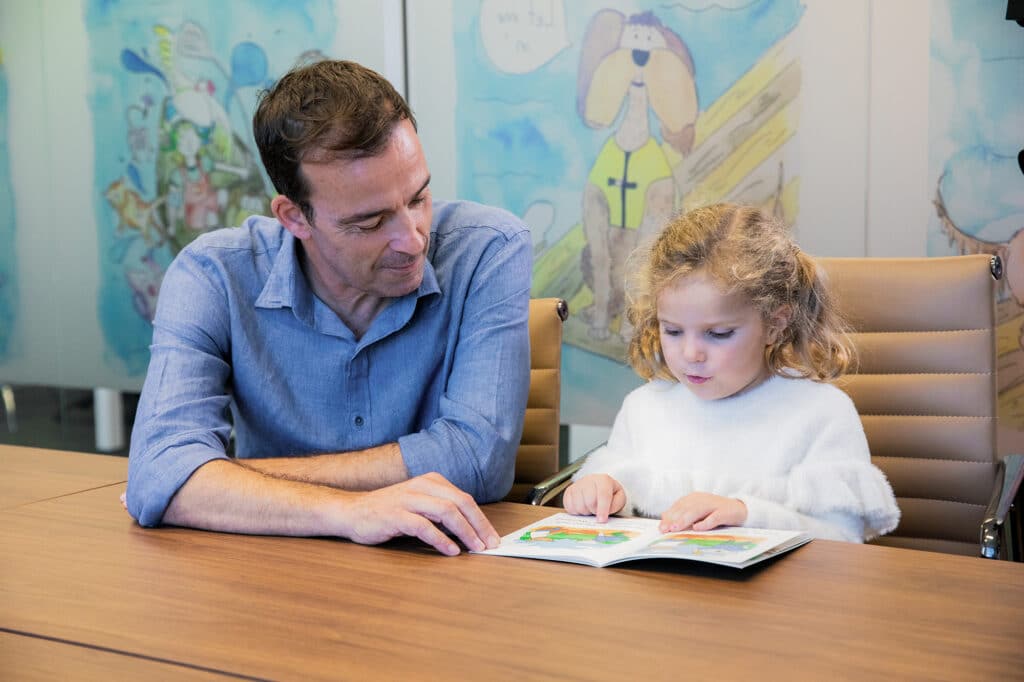Home reading
Home » Parent resources » Home reading
Practice in reading aloud is very important for literacy development. Reading with a parent or carer is a great opportunity to do this, but parents often do not get good advice about how to help their child.
The ‘Pause, Prompt, Praise’ method is research-based and effective.
When your child is a beginning reader and has difficulty reading a word, the following has been shown to be the best way to help them:
1. PAUSE for around 3-5 seconds—this is important because children can often work it out if given the time. They read more slowly than we do and need time to think. If we jump in too quickly, not only do we make them reliant on us to help them, but we undermine their self-confidence.
2. PROMPT—if the child cannot read the word, we can offer them a phonic prompt.
- The first prompt should be a phonic prompt: “What’s the first sound in that word?”
- If they still can’t get it, sound the word for them with a slight pause between each sound (e.g., f..r…o…g). Encourage your child to sound out and then blend all through the word.
- You could also identify the first sound and encourage them to sound out the rest or break the word into its syllables. It may be useful to cover the word and reveal it slowly, looking at the sounds or the sections of the word.
- If they still have difficulty, tell them the word—and move on.
3. PRAISE is an important part of reading and you should give specific praise when they have corrected an error or read the word correctly after a prompt. Praise should be specific, e.g: “You figured that out by yourself” or “You worked that out with only a little bit of help. ”
For older students who might misread a word and continue, wait until they get to the end of the sentence before stopping them. Sometimes the reader will realise their mistake because it doesn’t make sense—and then self-correct—but they often need to get to the end of the sentence to realise this. We want readers to be able to read for meaning, and self-correcting is an important skill for them to develop. If we immediately stop and correct them again we undermine the development of this process.
- If they read on into the next sentence, stop them and ask them: “Did that make sense?”
- If they think it made sense, then ask them to read the sentence again. Sometimes they get it correct because they read more carefully this time.
- If they have misread a word for the second time, go back to the word and ask them to have a close look at it. If they recognise their mistake, read the sentence again with the correct word.
- If they cannot read the word, help them to break it up using the strategies above.
- If they still have trouble, provide the word and move on—but make a note of the word and have a look at it later on. Talk about the meaning of the word, perhaps it’s a new word for them, there’s an unfamiliar part of the word, or they don’t know how to pronounce it.

